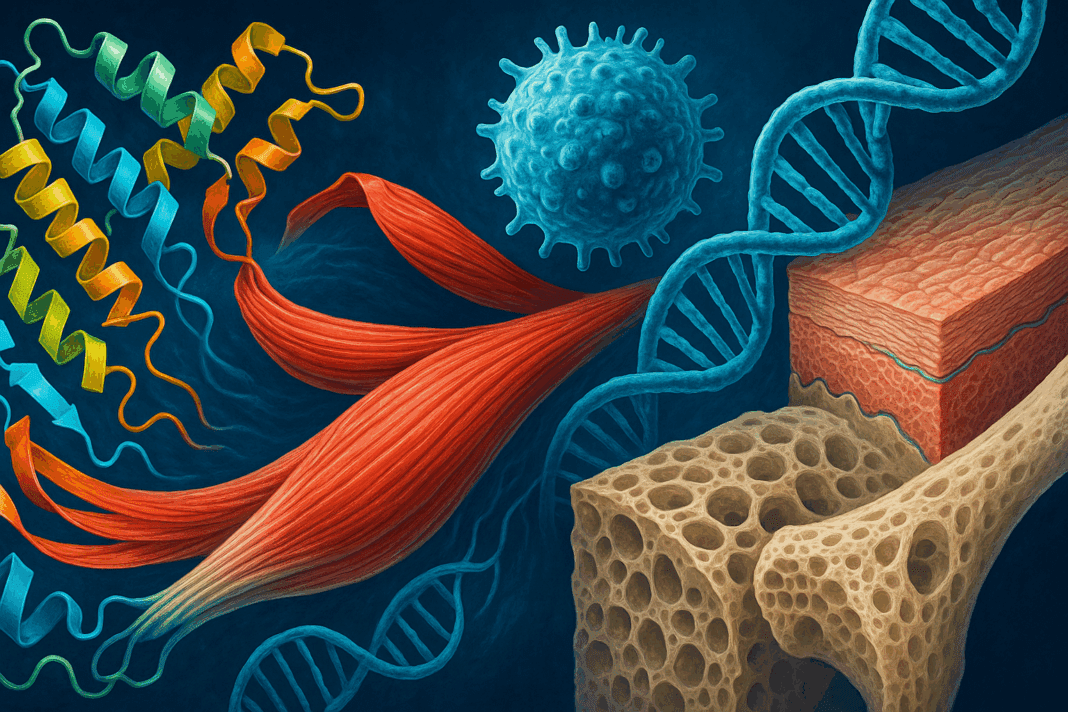Understanding the Essential Roles of Proteins in the Body
Proteins are among the most vital biological macromolecules in the human body, playing a central role in nearly every physiological process. From supporting muscle function to enabling immune defenses and catalyzing biochemical reactions, proteins are foundational to life itself. Understanding the functions of proteins in biology allows us to better grasp how the body maintains homeostasis, adapts to stress, repairs itself, and defends against disease. These molecules are not just abstract entities studied in textbooks—they are the architects and laborers of cellular architecture, metabolic balance, and molecular communication.
You may also like: Macronutrients vs Micronutrients: What the Simple Definition of Macronutrients Reveals About Your Diet and Health
In nutrition and wellness, protein is often discussed in the context of diet and muscle building, but its biological roles stretch far beyond what the average person might imagine. The concept of “functional proteins” goes far deeper than structural support or enzymatic activity. When we explore the 6 functions of body proteins in detail, we see how these compounds influence everything from hormone signaling to immune surveillance. Additionally, many structures in the body are primarily made of protein, including skin, hair, nails, tendons, and even parts of bones. Proteins are as much about structure as they are about function, and understanding this duality is critical to appreciating the scope of their influence.
In this article, we explore what is a functional protein in simple terms, what structures are primarily made of protein, and what is the list of functions in proteins that define their indispensable role in human health. Through the lens of current biology and nutritional science, we will uncover the dynamic and diverse roles these molecules play in maintaining life and supporting health and wellness.
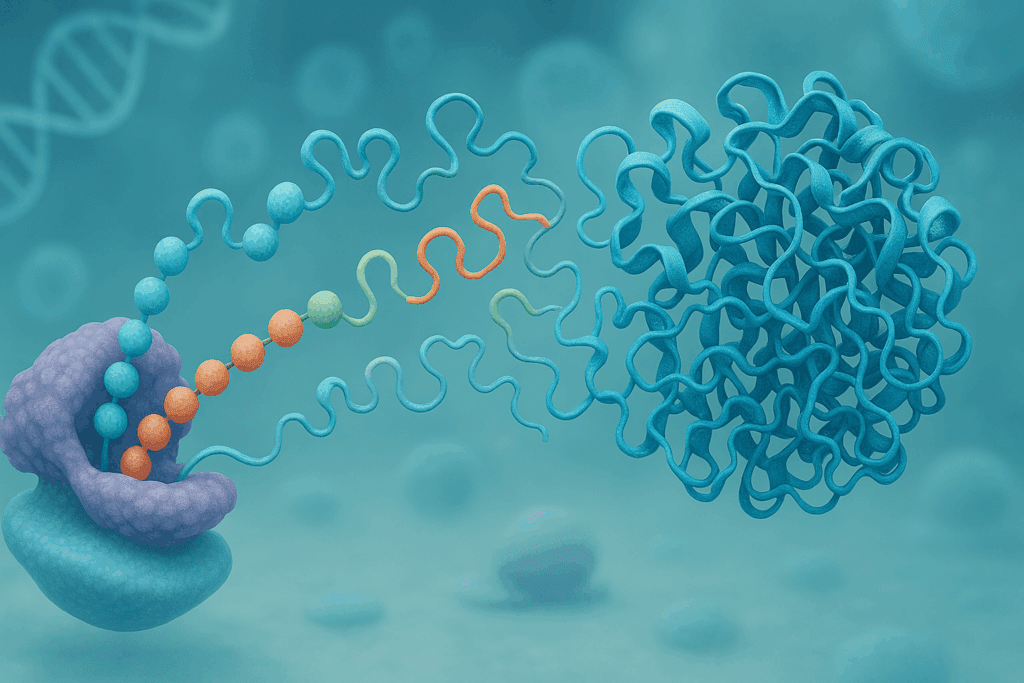
Defining Proteins and Their Molecular Architecture
To understand what are the roles of proteins in the body, we must first understand what proteins are at the molecular level. Proteins are polymers composed of amino acids, which are linked together by peptide bonds in a specific sequence dictated by the genetic code. This sequence ultimately determines a protein’s shape, and its shape determines its function. There are 20 standard amino acids that can be combined in nearly limitless ways to form the vast array of proteins found in living organisms. This diversity in structure underlies the diversity in function, making proteins the most versatile of biological macromolecules.
When people ask, “what is a functional protein simple definition,” the answer is relatively straightforward: a functional protein is one that has folded into its specific three-dimensional shape and is actively performing its biological role. Functional proteins are not limited to enzymes or hormones; they also include antibodies, transporters, and even structural components of cells. Each protein’s structure is intimately tied to its function, which is why even a minor alteration in amino acid sequence—caused by a mutation, for instance—can lead to dysfunction and disease.
Proteins are synthesized in the ribosomes through a process called translation, which follows the transcription of DNA into messenger RNA (mRNA). Once synthesized, proteins may undergo further modifications to become fully functional. This post-translational processing includes folding, cutting, and chemical tagging, all of which are crucial to ensure the protein can perform its specific job in the body. Thus, the definition of a functional protein extends beyond its mere presence—it implies readiness, activity, and specificity.
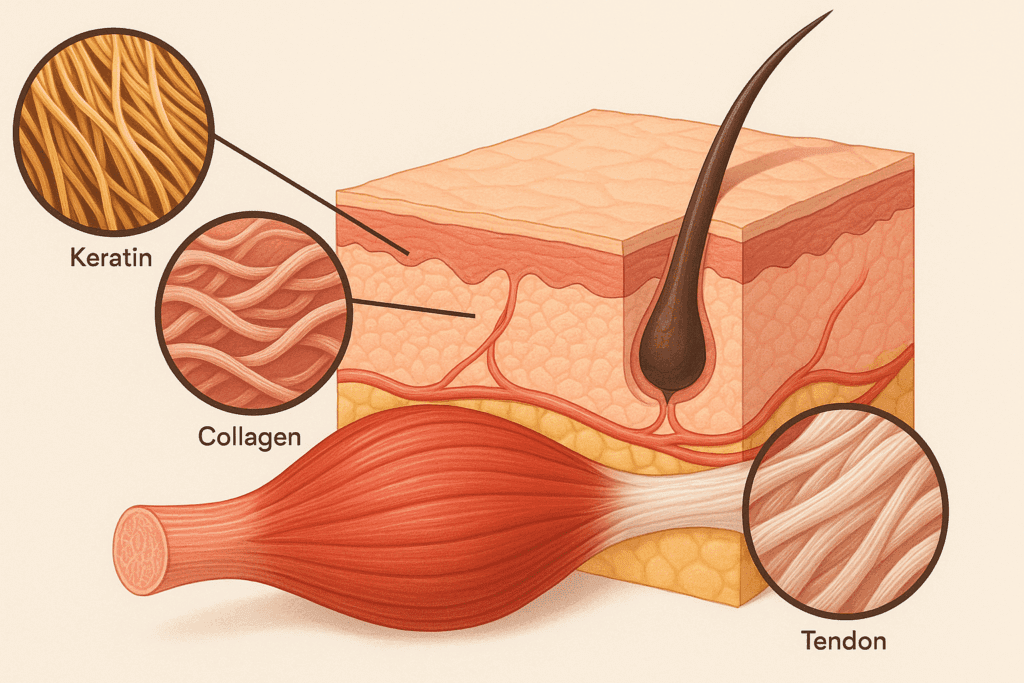
Structural Support: Proteins as the Framework of the Body
One of the most visibly apparent roles of proteins is in providing structural support to the body. Proteins such as collagen, keratin, and elastin are integral to tissues that require both strength and flexibility. Collagen, for example, is the most abundant protein in the human body and serves as the primary component of connective tissues, including ligaments, tendons, cartilage, and dermis. Without collagen, the body would lose its mechanical integrity, and tissues would be prone to rupture and wear.
When considering what structures are primarily made of protein, the list includes not only connective tissues but also hair, skin, nails, and even parts of bones. Keratin is the fibrous protein responsible for the toughness of hair and nails, while elastin allows tissues like skin and blood vessels to stretch and return to their original shape. These proteins are not passive materials; they are dynamic and responsive, continually remodeled in response to stress, aging, and environmental conditions.
This structural role of proteins becomes particularly important in the context of injury and repair. During wound healing, for instance, fibroblasts secrete collagen to form new connective tissue. Athletes and individuals undergoing physical training also stimulate collagen and muscle protein synthesis, highlighting the ongoing construction and reconstruction mediated by proteins. This reinforces the central idea in the functions of proteins biology: they are not static; they are constantly engaged in shaping, maintaining, and remodeling the human form.

Enzymatic Activity: Catalysts of Biochemical Reactions
Beyond structure, one of the most fundamental functions of proteins in biology is their role as enzymes. Enzymes are specialized proteins that accelerate chemical reactions, often by many orders of magnitude. Without enzymes, the metabolic processes that sustain life—from digestion to cellular respiration—would occur too slowly to support life as we know it.
Each enzyme is highly specific, designed to act on a particular substrate and catalyze a specific reaction. This specificity is derived from the enzyme’s three-dimensional shape, which forms an active site tailored to the substrate. A disruption in this shape—whether through genetic mutation, pH imbalance, or temperature change—can impair enzymatic function, leading to disease or metabolic inefficiency.
The 6 functions of body proteins include this enzymatic role as one of their core pillars. Digestive enzymes like amylase, lipase, and protease break down carbohydrates, fats, and proteins in the food we eat, ensuring nutrients are absorbed and metabolized. Other enzymes, such as DNA polymerase and RNA polymerase, are critical for genetic replication and expression. The body contains thousands of enzymes, each fine-tuned to facilitate the vast array of biochemical processes necessary for health, adaptation, and survival.
Transport and Storage: Moving Molecules Where They’re Needed
Another vital function of proteins lies in transport and storage. Certain proteins are tasked with carrying essential molecules throughout the body, ensuring that each cell receives the substances it needs to function. Hemoglobin, for instance, is a protein in red blood cells that binds oxygen in the lungs and delivers it to tissues throughout the body. Without hemoglobin, oxygen transport would be insufficient to meet the metabolic demands of even the most basic cellular processes.
Similarly, myoglobin stores oxygen in muscle tissue, providing a reserve that is especially important during intense physical activity. Transport proteins are also embedded in cellular membranes, where they facilitate the movement of ions and nutrients in and out of cells. These membrane proteins maintain electrochemical gradients essential for processes like nerve conduction and muscle contraction.
Storage proteins serve as reservoirs of amino acids and other nutrients. Ferritin, for example, stores iron in a bioavailable form, releasing it as needed for hemoglobin synthesis and other cellular functions. In the context of what is the list of functions in proteins, the ability to transport and store key molecules highlights the logistical sophistication of protein-mediated systems. These proteins act as molecular couriers, ensuring timely delivery and careful regulation of biological resources.
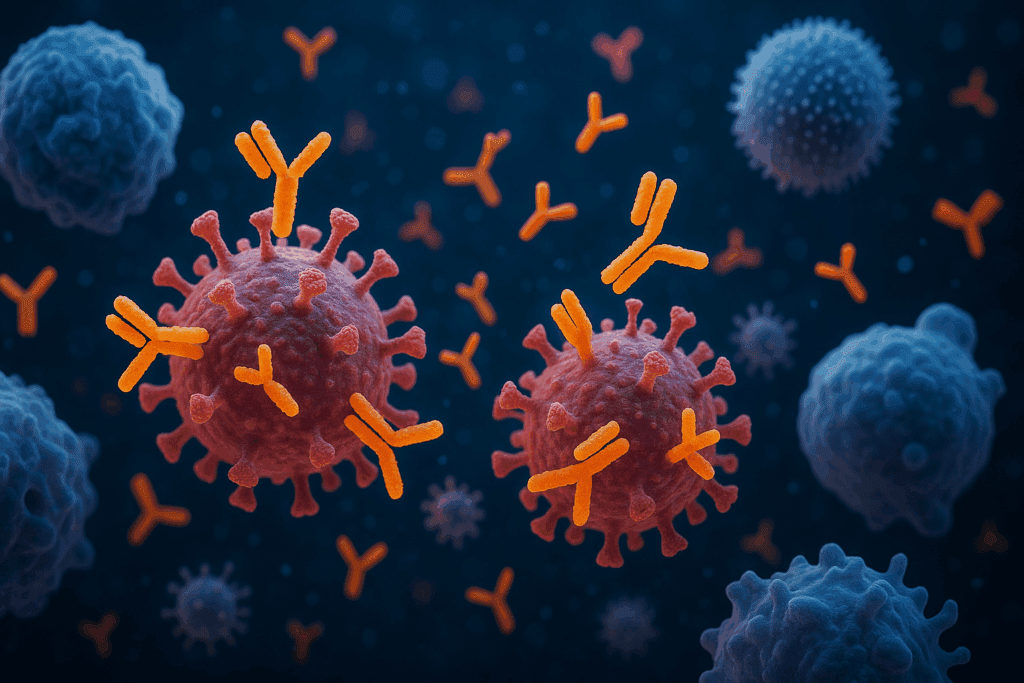
Immune Defense: Proteins as Protectors
The immune system relies heavily on proteins for both recognition and defense. Antibodies, or immunoglobulins, are proteins that specifically recognize and bind to antigens—foreign substances like bacteria, viruses, and toxins. Once bound, antibodies mark these invaders for destruction or neutralization, initiating a cascade of immune responses. This form of immune recognition is highly specific, relying on the unique variable regions of antibody molecules to match the antigen with precision.
In addition to antibodies, other immune proteins such as complement proteins, cytokines, and interferons play key roles in immune signaling and defense. These proteins coordinate the inflammatory response, recruit immune cells to sites of infection, and modulate the intensity of the immune reaction to prevent excessive tissue damage.
When considering the 6 functions of body proteins, immune defense stands out as a function that blends recognition, communication, and action. Immune proteins do not merely react; they adapt and remember. This is the basis of immunological memory, which allows vaccines to protect us by priming the immune system with harmless versions of pathogens. These insights help us appreciate how understanding the functions of proteins in biology is not just academic—it is central to developing therapies and preventive strategies in medicine.
Signaling and Regulation: Proteins as Messengers and Controllers
Proteins also serve as the body’s chemical messengers and regulatory agents. Hormones such as insulin, glucagon, and growth hormone are all proteins that coordinate physiological activities across tissues and organ systems. Insulin, for instance, regulates blood glucose levels by signaling cells to take up glucose after a meal. Disruptions in insulin signaling lead to metabolic disorders such as diabetes, underscoring the precision required in protein-mediated communication.
Receptor proteins, found on the surface of cells, respond to these signaling molecules by triggering intracellular responses. These receptors are highly specific, recognizing only their corresponding ligands and initiating pathways that regulate gene expression, cell division, or metabolic activity. This intricate network of signaling proteins enables the body to respond swiftly and appropriately to changing conditions, whether internal or external.
The regulatory role of proteins also extends to gene expression. Transcription factors are proteins that bind to DNA and either activate or repress the transcription of specific genes. This determines which proteins are synthesized in a cell at any given time, influencing cell fate, differentiation, and function. Therefore, in answering what are the roles of proteins in the body, one must include their critical role in communication and control—without which, cellular chaos would ensue.
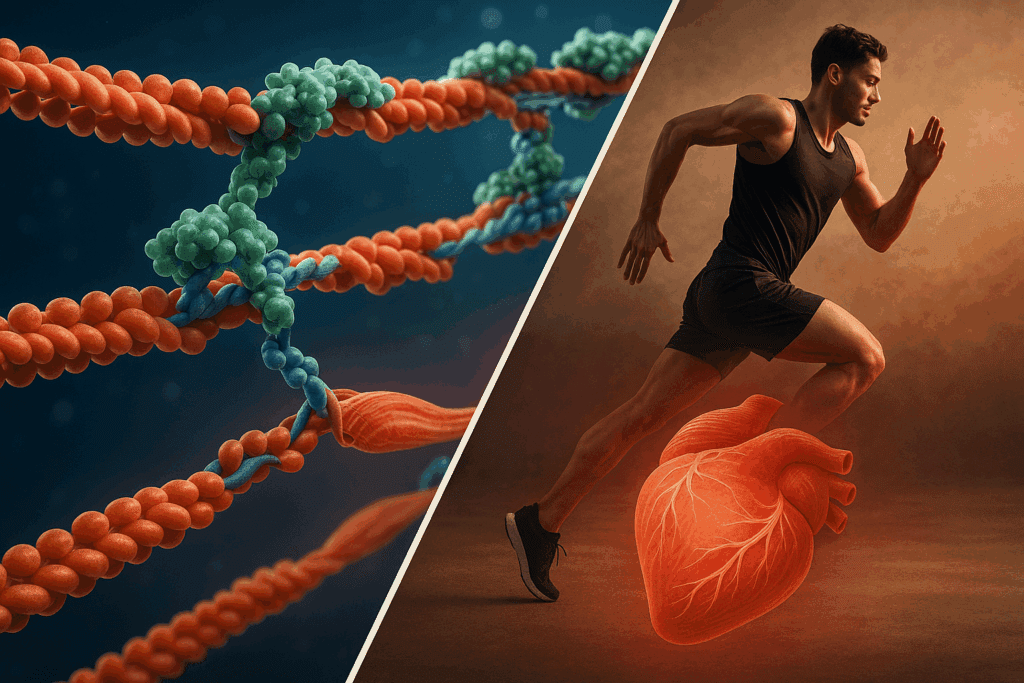
Movement and Muscle Contraction: Proteins in Motion
Movement at both the macroscopic and microscopic level is dependent on proteins. Muscle contraction is driven by the interaction between actin and myosin, two structural proteins that slide past each other to generate force. This process is not only essential for voluntary movement but also for involuntary actions such as heartbeats, respiration, and digestion. These movements are coordinated and powered by ATP, with proteins acting as both the machinery and the fuel regulators.
On a cellular level, motor proteins like kinesin and dynein transport organelles and vesicles along microtubules, maintaining cellular organization and function. Cilia and flagella—structures that enable cell motility—are also composed of protein fibers. These microscopic movements are essential for processes like fertilization, mucus clearance in the respiratory tract, and signal transduction in sensory organs.
What structures are primarily made of protein becomes evident when observing these complex systems. Muscles, cytoskeletons, and contractile fibers all rely on proteins not just for their form but for their function. This dual role emphasizes how structure and motion are inherently linked in protein biology, and why movement must be included in the list of the 6 functions of body proteins.
Why Protein Structure Matters: Folding, Misfolding, and Disease
One of the most remarkable characteristics of proteins is their dependency on correct three-dimensional structure. A protein’s functionality hinges not just on its amino acid sequence but on how it folds into its unique shape. This shape determines how and where the protein can interact with other molecules. Even a minor deviation in folding can lead to malfunction, and in many cases, serious disease. The process of protein folding is highly regulated within the cell, often aided by specialized molecules known as chaperone proteins. These molecular assistants help ensure that newly formed polypeptides assume the correct shape, reducing the risk of aggregation or misfolding.
However, when folding goes awry, the consequences can be severe. Misfolded proteins are implicated in a range of chronic and often debilitating diseases. Conditions such as Alzheimer’s disease, Parkinson’s disease, Huntington’s disease, and certain forms of amyloidosis are all linked to the accumulation of abnormally folded proteins. In these cases, the body’s normal clearance mechanisms fail, and toxic protein aggregates build up, impairing cellular function and eventually leading to cell death.
Understanding the functions of proteins in biology requires an appreciation of how form dictates function. Proteins are not static entities; they exist in dynamic conformations, capable of shifting shape in response to changes in their environment or binding partners. This flexibility allows proteins to participate in complex signaling pathways and adapt to new cellular demands. Still, that same adaptability introduces vulnerabilities—especially when the balance of folding and misfolding is disrupted. Maintaining protein homeostasis is therefore not just a cellular housekeeping task; it is a cornerstone of health and disease prevention.
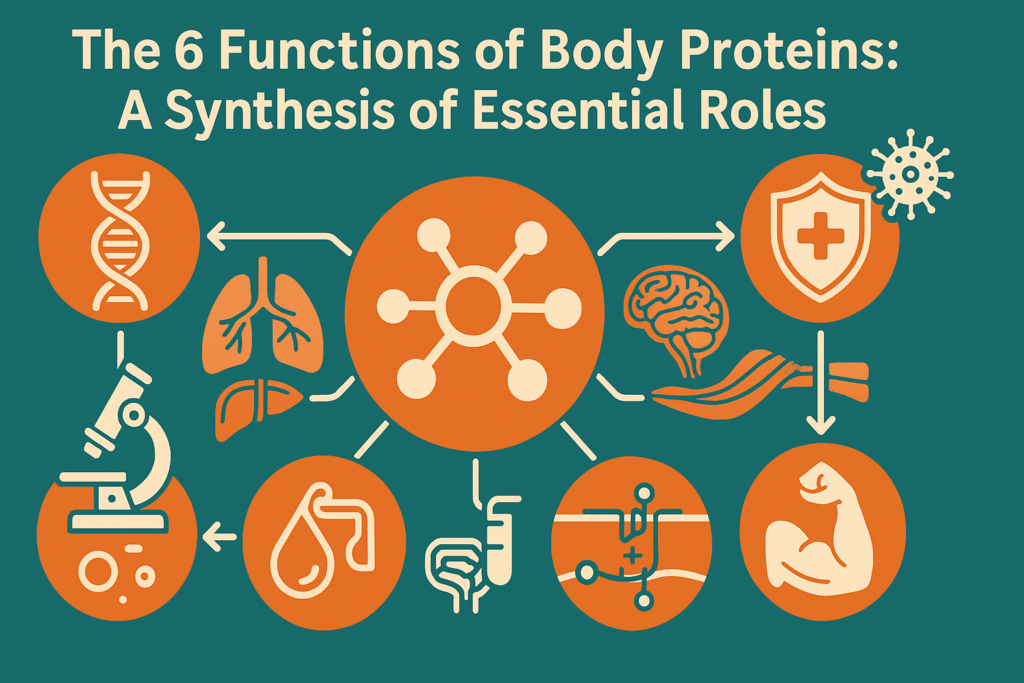
The 6 Functions of Body Proteins: A Synthesis of Essential Roles
As we synthesize our understanding of the 6 functions of body proteins, it becomes clear that proteins are indispensable to nearly every biological process. These functions—structural support, enzymatic catalysis, molecular transport and storage, immune defense, cellular signaling and regulation, and movement—represent the foundational roles that keep the human body alive and thriving. Each function is distinct yet interdependent, often overlapping in complex biological systems.
For example, the immune response not only requires antibody production but also relies on enzymes that process antigens, transporters that move immune cells into tissues, and signaling proteins that coordinate the immune reaction. Likewise, muscle contraction demands not only structural proteins like actin and myosin but also energy metabolism enzymes, oxygen-transporting hemoglobin, and nerve-signaling proteins to initiate movement. This interconnectedness exemplifies why understanding what is the list of functions in proteins is more than an academic exercise—it’s a guide to understanding life itself.
Furthermore, proteins don’t operate in isolation. They interact with other macromolecules like carbohydrates, lipids, and nucleic acids to form larger functional complexes. In doing so, proteins regulate gene expression, facilitate metabolic flux, build tissues, repair damage, and coordinate physiological responses. When dietary intake is insufficient or when genetic defects impair protein function, the effects can cascade throughout the body. This is why adequate protein consumption through diet and, in some cases, supplementation is critical, especially for populations with increased needs such as children, pregnant women, older adults, and athletes.
Dietary Proteins: Nutrition Meets Physiology
When people think of protein, they often think of food. Indeed, dietary proteins are the building blocks that allow the body to synthesize its own proteins. Once ingested, proteins are broken down into amino acids by digestive enzymes, absorbed into the bloodstream, and distributed to cells where they are reassembled into new proteins as needed. This process is known as protein turnover, and it occurs continuously to replace damaged proteins, support growth, and meet physiological demands.
Protein quality is an important consideration in nutrition. Complete proteins contain all nine essential amino acids that the body cannot synthesize on its own. Animal sources such as meat, fish, eggs, and dairy are complete proteins, while most plant-based sources are incomplete, with the exception of soy and quinoa. However, by combining different plant proteins—such as rice and beans—one can still achieve a complete amino acid profile. This principle is particularly important for individuals following vegetarian or vegan diets.
The relationship between dietary protein and the body’s functions goes well beyond muscle synthesis. Protein intake influences immune health, wound healing, hormonal balance, and metabolic efficiency. For instance, low protein diets in older adults are associated with sarcopenia, a condition characterized by muscle wasting and functional decline. Similarly, inadequate protein can impair immune responses, leading to increased susceptibility to infection. Understanding what are the roles of proteins in the body therefore extends to understanding how dietary habits influence overall wellness and disease prevention.
What Structures Are Primarily Made of Protein?
A closer look at human anatomy reveals that many of the body’s most essential structures are primarily made of protein. Skin, the body’s largest organ, is largely composed of collagen, keratin, and elastin—proteins that provide tensile strength, waterproofing, and elasticity. Muscle tissue is predominantly made of actin and myosin, the contractile proteins responsible for movement. Tendons and ligaments are dense with collagen fibers, allowing them to withstand tension and transmit forces between muscles and bones.
Even in organs where protein is not the most visible component, it is often the most critical. The heart relies on protein-based ion channels and receptors to regulate heartbeat. The kidneys depend on protein-based filtration membranes to remove waste from the blood. The brain contains receptors, enzymes, and neurotransmitter transporters—all protein structures essential for thought, memory, and emotion.
At the cellular level, proteins also form the cytoskeleton—a dynamic internal scaffolding that maintains cell shape, enables intracellular transport, and facilitates cell division. This structural role of proteins is inseparable from their functional capacity. What structures are primarily made of protein is not a trivial question—it is a foundational inquiry that connects molecular biology to anatomy, function to form, and nutrition to health.
Protein Deficiency and Health Risks
While many people in developed nations consume adequate protein, deficiencies still exist—especially among the elderly, individuals with chronic illness, and those following restrictive diets. Protein-energy malnutrition can take several forms, including kwashiorkor and marasmus, both of which result in muscle wasting, immune dysfunction, and impaired development. These severe deficiencies are more common in low-income settings but can also occur in hospitalized patients or individuals with eating disorders.
Even marginal protein insufficiency can affect health outcomes. Reduced protein intake impairs wound healing, slows recovery from surgery or illness, and increases the risk of frailty and falls in older adults. In children, inadequate protein intake can impair growth, cognitive development, and immune competence. Given the wide-reaching effects of protein on every major biological function, maintaining sufficient intake is a cornerstone of both nutrition and disease prevention.
This underscores why understanding the functions of proteins in biology is crucial not just for scientists or healthcare providers, but for the general public. A lack of awareness about the importance of protein can lead to dietary habits that compromise long-term health. Public health education, therefore, plays a vital role in helping people make informed nutritional choices based on a solid understanding of what proteins do in the body.
Frequently Asked Questions: Advanced Insights on the Roles and Functions of Proteins in the Body
1. How do the roles of proteins vary across different stages of life?
The roles of proteins in the body shift in both priority and volume depending on age, health status, and physiological demands. In infancy and childhood, proteins are heavily allocated toward growth and development, helping form tissues, hormones, and antibodies critical for immune training. During adolescence, protein demands surge again to support rapid musculoskeletal expansion and hormonal changes. In adulthood, the emphasis moves toward repair, maintenance, and metabolic regulation, but in older age, protein becomes essential for preserving lean mass, preventing frailty, and maintaining immune defense. Understanding what are the roles of proteins at each life stage provides a more dynamic view than the static model often presented in basic biology. It also reinforces the relevance of the 6 functions of body proteins across the human lifespan.
2. Can environmental stressors impact how proteins function in the body?
Absolutely. Environmental stressors such as pollution, UV radiation, poor nutrition, and chronic psychological stress can alter protein expression and function. Under oxidative stress, for instance, proteins can become denatured or misfolded, impairing their biological roles. These disruptions may influence the immune system, enzyme function, or cellular communication, highlighting how sensitive the functions of proteins in biology are to external inputs. Moreover, the stress response itself is orchestrated by specific proteins like heat shock proteins, which help preserve protein structure and cellular function under duress. This adds another layer to what is the list of functions in proteins—beyond structural and enzymatic roles, proteins also act as cellular guardians during adversity.
3. How do genetic mutations affect protein functionality?
Genetic mutations can have profound effects on protein synthesis, folding, and function. A point mutation might lead to a nonfunctional enzyme or an unstable structural protein, which can result in diseases such as cystic fibrosis, sickle cell anemia, or Marfan syndrome. These conditions underscore how tightly the 6 functions of body proteins depend on the integrity of DNA blueprints. A single altered amino acid in a protein can prevent it from folding correctly, impairing its ability to bind to other molecules or catalyze reactions. This is particularly important when evaluating what is a functional proteins simple definition—because a protein may exist in the body but not be functional if the mutation alters its conformation.
4. How do the roles of proteins differ in plant-based versus animal-based diets?
While both sources provide essential amino acids, the roles of proteins from plant and animal sources differ in bioavailability, completeness, and support for bodily functions. Animal proteins are often complete and highly digestible, making them efficient at fulfilling the 6 functions of body proteins without requiring dietary pairing. Plant proteins may lack one or more essential amino acids, but when combined appropriately, they still support muscle repair, immune response, and enzyme synthesis. Interestingly, plant-based proteins often come with additional phytonutrients and fiber, which influence gut microbiota and indirectly affect protein metabolism. In nutritional science, it’s essential to revisit what are the roles of proteins not just by molecular function but by source and how that source integrates into broader health patterns.
5. What emerging technologies are being used to study protein functions in biology? Recent advancements like cryo-electron microscopy, single-cell proteomics, and artificial intelligence-driven modeling are revolutionizing how scientists study the functions of proteins in biology. These tools allow researchers to observe protein interactions in real time, simulate folding processes, and predict dysfunction based on genetic variants. One exciting frontier is precision medicine, where individual protein profiles may inform personalized treatments for diseases like cancer, autoimmune disorders, and metabolic syndromes. Understanding what is the list of functions in proteins becomes even more powerful when paired with technology that can track changes in those functions dynamically within a living organism. These innovations are redefining how we understand functional proteins and their roles in health and disease.
6. Why do athletes and highly active individuals have different protein requirements?
Athletes and physically active individuals experience more frequent muscle tissue breakdown and require additional protein to support recovery, hypertrophy, and performance adaptation. Their demand goes beyond merely repairing tissue; they need more protein to enhance oxygen delivery (via hemoglobin), regulate energy metabolism, and improve neuromuscular coordination—all functions tied to different proteins. In this context, understanding what are the roles of proteins helps clarify why general dietary recommendations may fall short for active populations. Additionally, their skeletal structures, tendons, and ligaments—which are among the key structures primarily made of protein—face higher mechanical stress and need enhanced collagen synthesis for resilience. Meeting these elevated needs ensures that all 6 functions of body proteins are optimized in high-performance conditions.
7. How do proteins influence mental health and neurological function?
Proteins play a lesser-known yet critical role in brain function, neurotransmitter synthesis, and mental health regulation. Enzymes convert amino acids into neurotransmitters like serotonin, dopamine, and GABA, all of which regulate mood, sleep, and cognition. Structural proteins maintain neuronal integrity, while signaling proteins influence synaptic plasticity and memory formation. This brain-centric view shifts our understanding of what are the roles of proteins from physical maintenance to psychological equilibrium. Moreover, disruptions in protein folding or expression are now linked to neurodegenerative diseases, providing new urgency to map out the full spectrum of the 6 functions of body proteins in neurological health.
8. Are there non-obvious structures that are primarily made of protein?
Beyond muscles, skin, and tendons, several less-visible yet critical structures are primarily made of protein. These include lens proteins in the eye (crystallins), which maintain transparency and focus; scaffolding proteins in the inner ear, essential for balance; and components of blood clotting, such as fibrinogen. Even the extracellular matrix, which provides a scaffold for organ formation, is protein-rich and essential for tissue development and regeneration. Reframing what structures are primarily made of protein expands our appreciation for protein’s ubiquity in anatomy and helps identify targets for regenerative medicine and biomaterials research. The sheer variety of these protein-based structures reinforces the idea that the body is quite literally built and run by proteins.
9. How does chronic disease influence protein metabolism and demand?
Chronic conditions such as cancer, kidney disease, and heart failure often disrupt protein metabolism, increasing demand while simultaneously impairing the body’s ability to utilize or synthesize proteins effectively. For instance, inflammation in chronic disease elevates protein turnover, increases muscle wasting, and impairs albumin production, which affects fluid balance and transport functions. In these cases, a clear understanding of what is the list of functions in proteins becomes clinically relevant—not just academically interesting—because it can guide dietary and therapeutic interventions. Moreover, certain medications prescribed in chronic illness may inhibit protein digestion or absorption, further complicating nutritional support. Managing these shifts requires not just awareness of dietary intake but a broader strategy that addresses how proteins are used across multiple biological systems.
10. What future developments could enhance how we utilize proteins in medicine and nutrition?
The future of protein research lies in engineered proteins, nutrigenomics, and AI-driven drug design. Scientists are developing synthetic proteins that mimic or enhance natural functions, offering potential treatments for enzyme deficiencies or autoimmune conditions. Personalized nutrition based on one’s genetic ability to metabolize and synthesize proteins is also gaining traction. In public health, we are seeing a push toward protein fortification in foods to combat malnutrition in vulnerable populations. The future also includes exploring what is a functional proteins simple definition from a computational perspective—where machine learning can predict whether a protein will be functional before it’s ever expressed in a lab. These innovations could transform how we apply the 6 functions of body proteins to disease prevention, wellness, and global health strategies.
Final Thoughts: Why the Roles of Proteins Are Essential to Life and Health
In conclusion, proteins are far more than nutrients or structural molecules—they are the lifeblood of cellular and systemic function. By exploring what are the roles of proteins in the body, we uncover a rich landscape of biological processes that sustain human life, ranging from the structural integrity of tissues to the precision of hormonal signaling. Each of the 6 functions of body proteins contributes to the intricate dance of physiology, and when one function falters, the entire system may suffer.
Understanding what is a functional protein in a simple definition helps demystify complex biological processes. It reminds us that proteins are not just products of genetic expression; they are active agents of change, response, and regulation. They fold into intricate structures, perform precise functions, and adapt to the body’s ever-changing needs. From the muscles that power movement to the antibodies that defend us from disease, proteins are the dynamic engines of health.
Further Reading:
What Are Proteins and What Is Their Function in the Body?
9 Important Functions of Protein in Your Body


